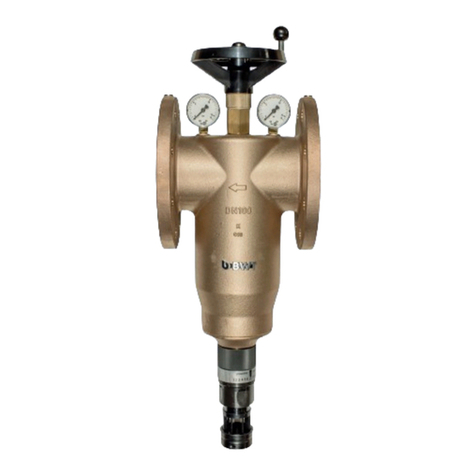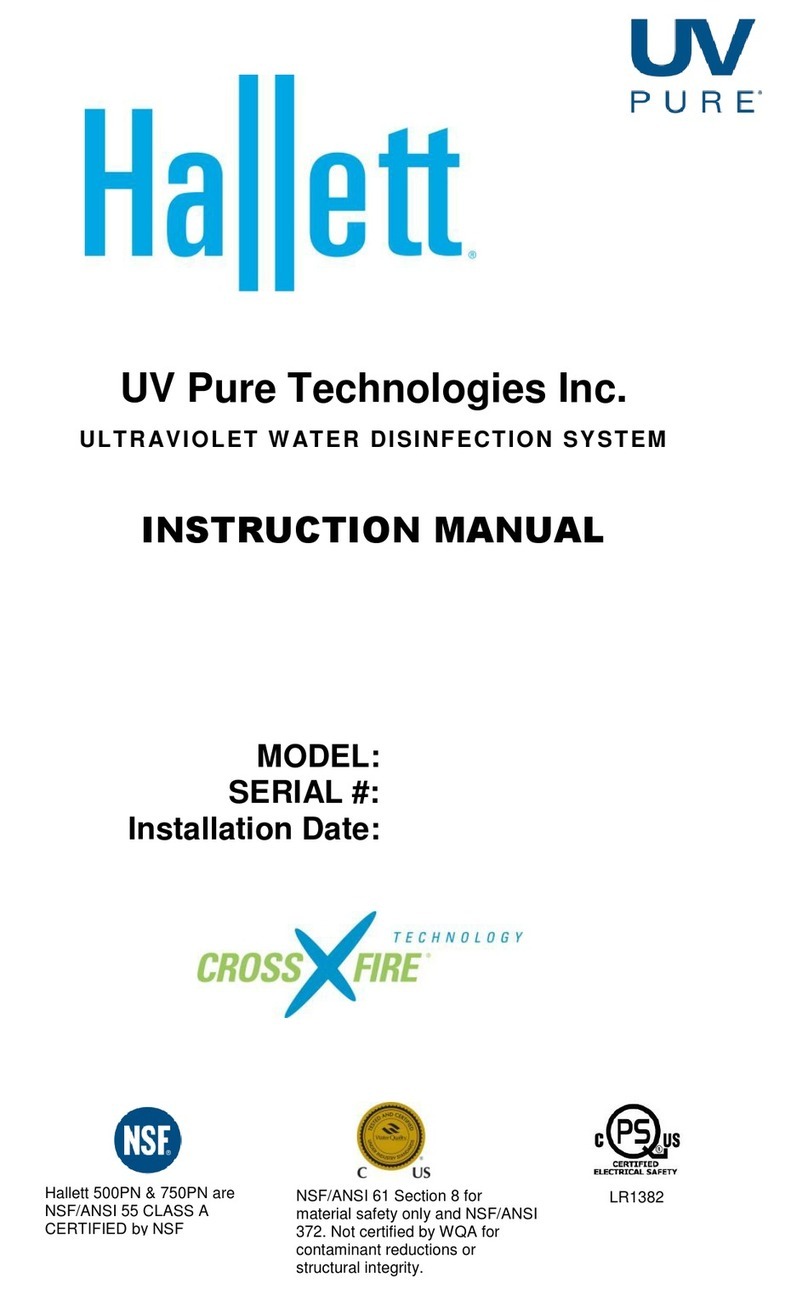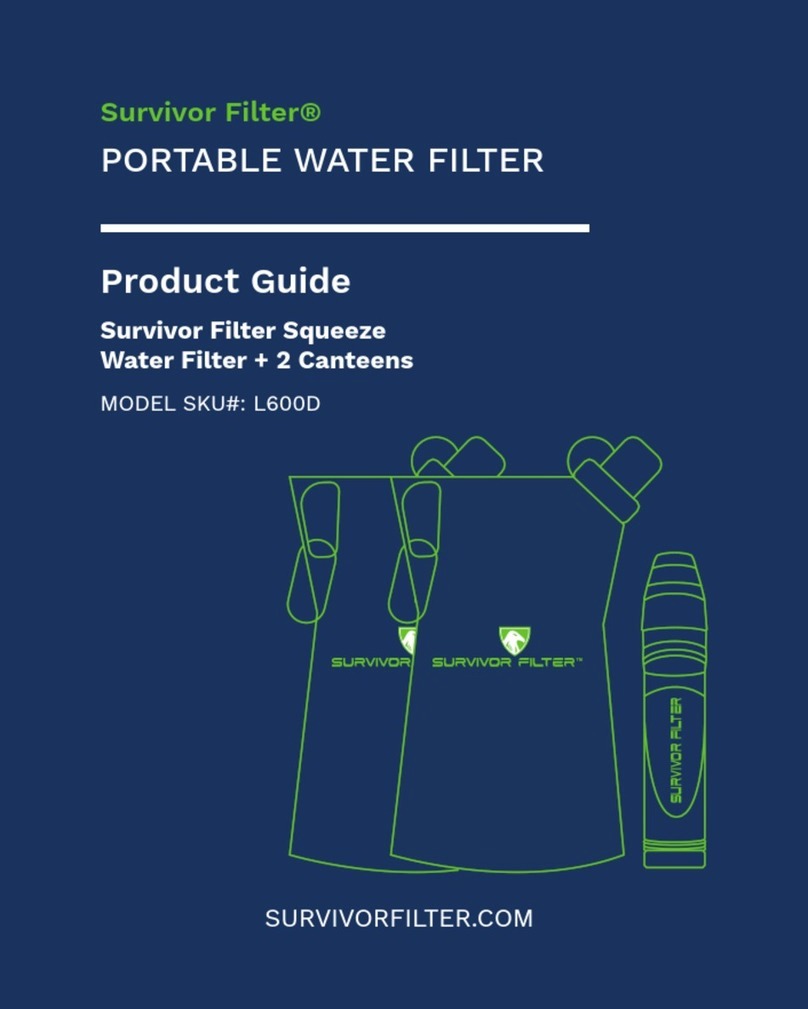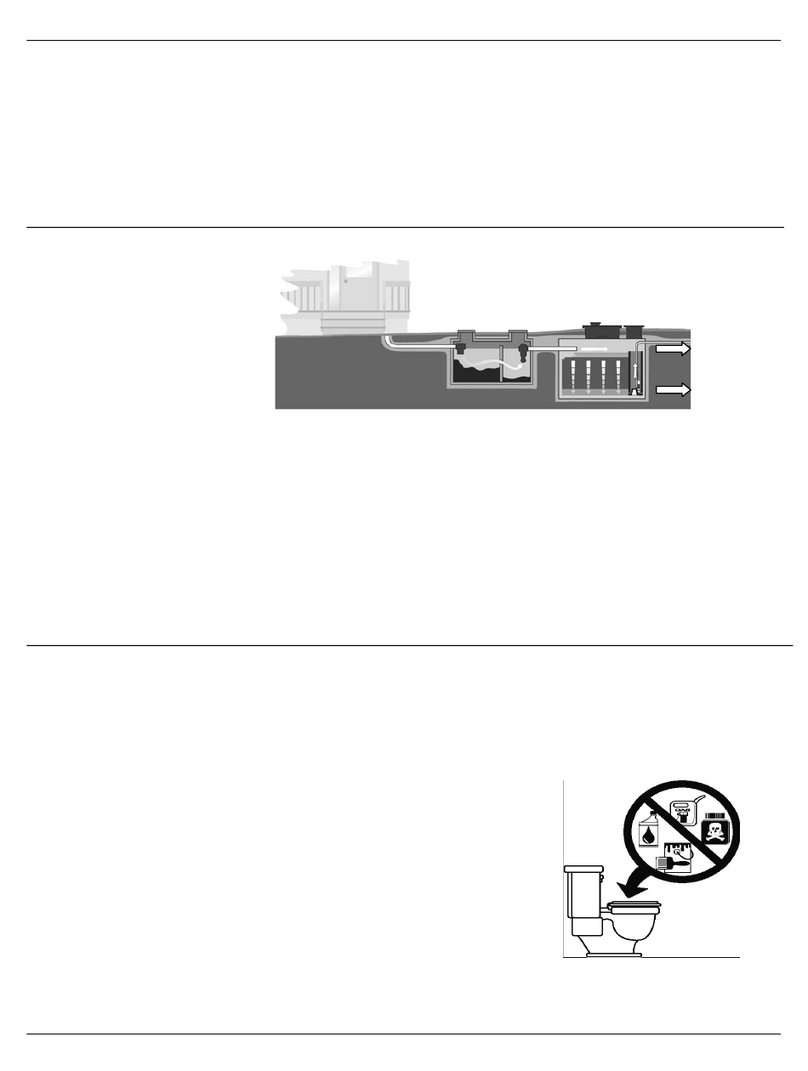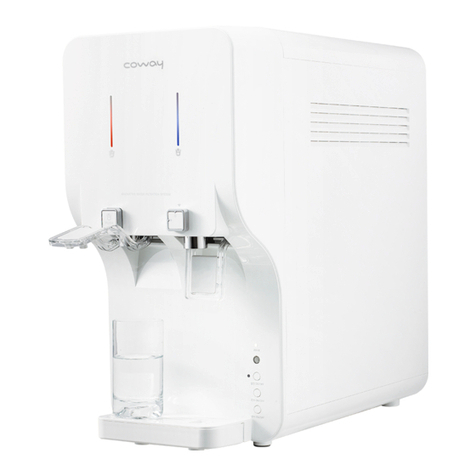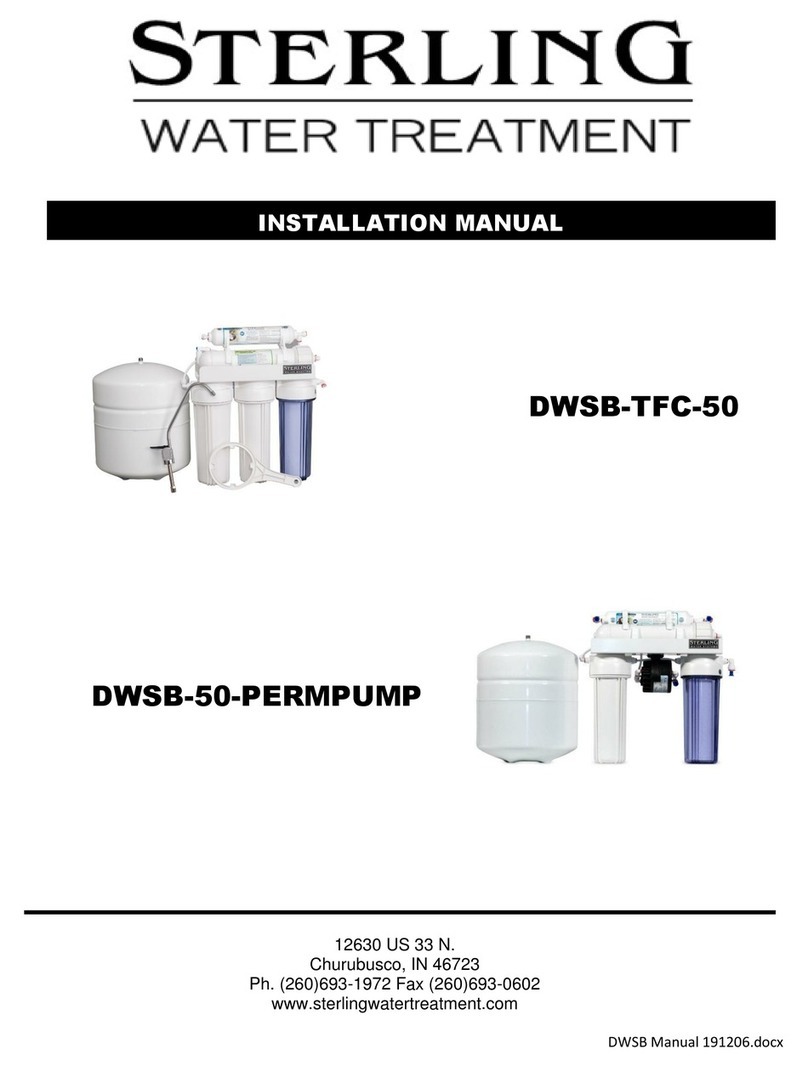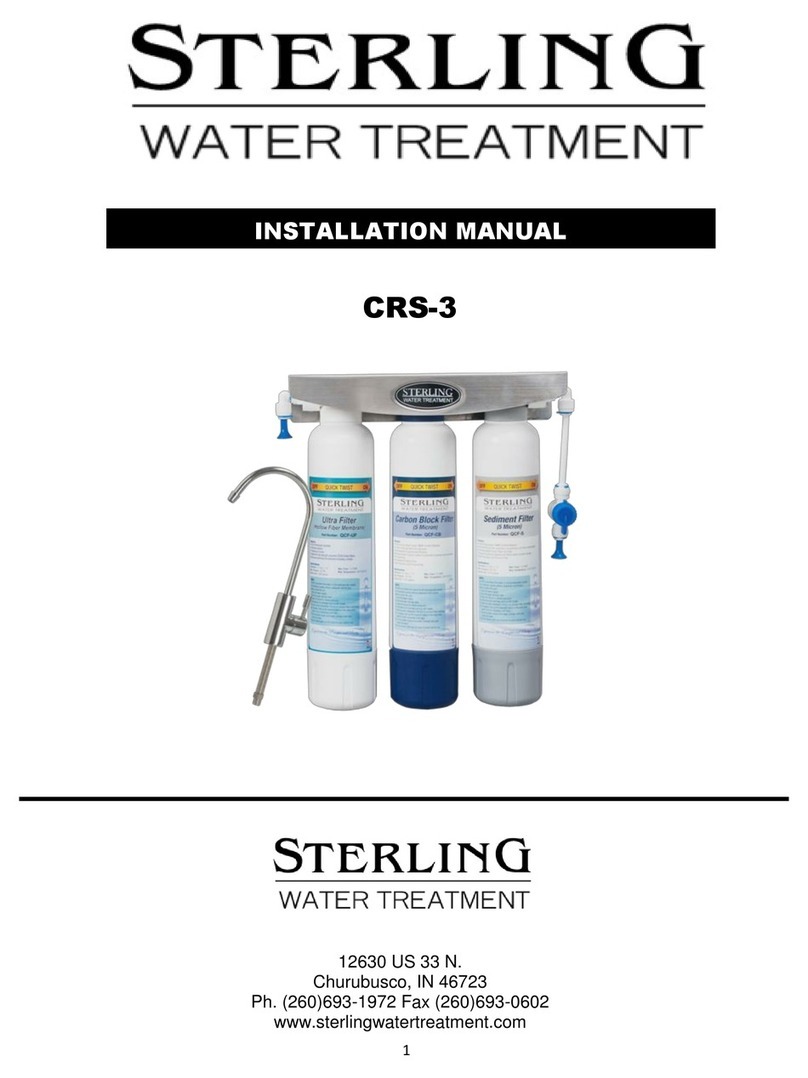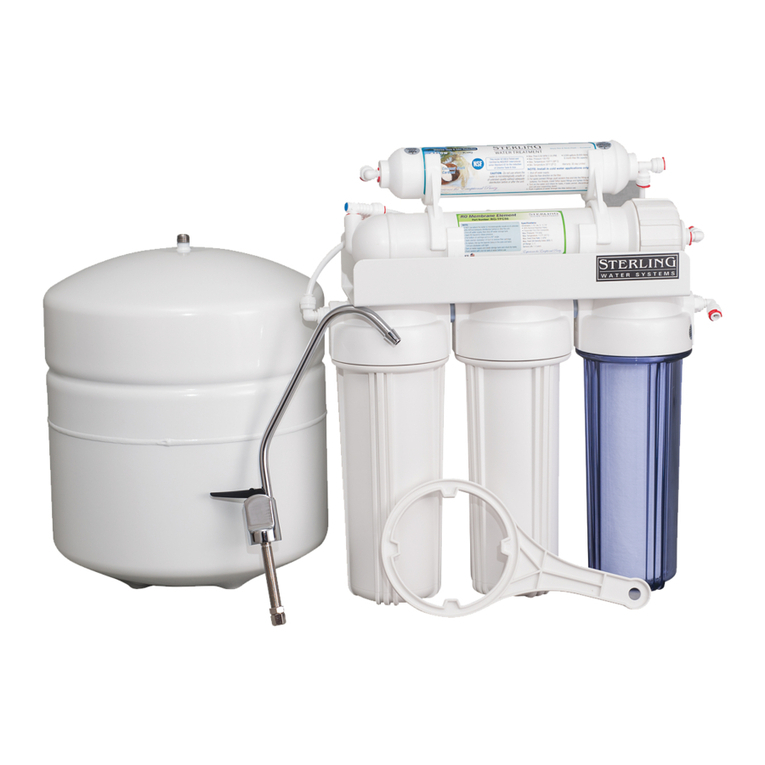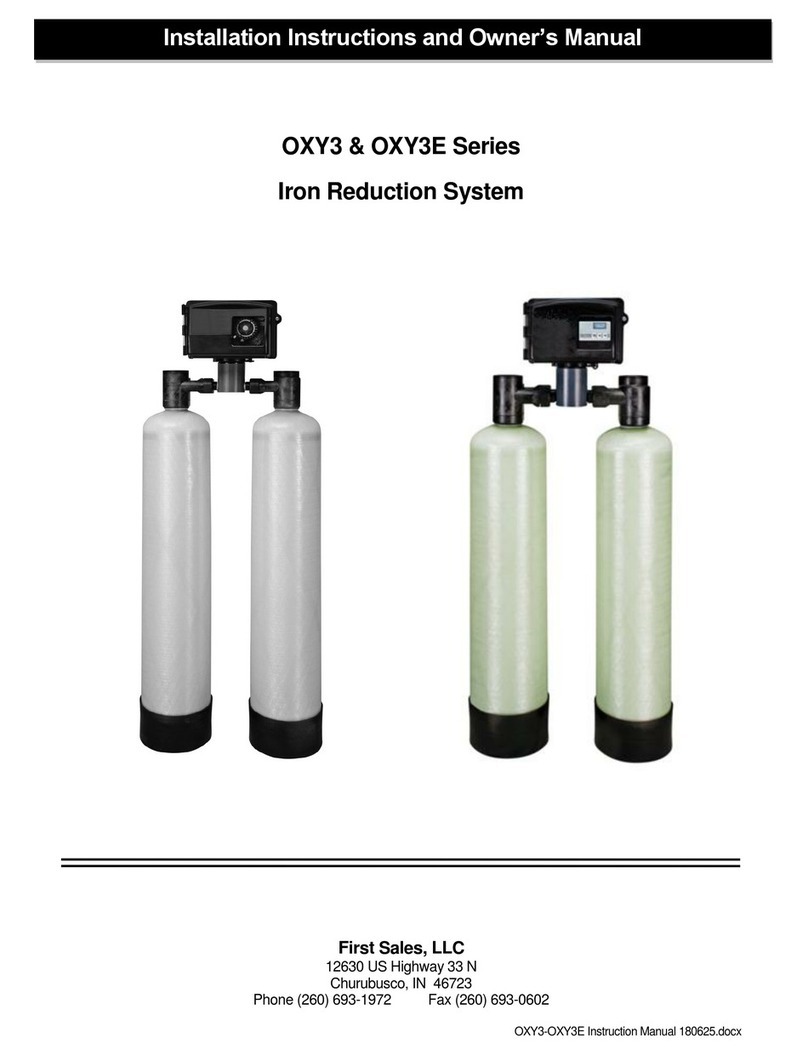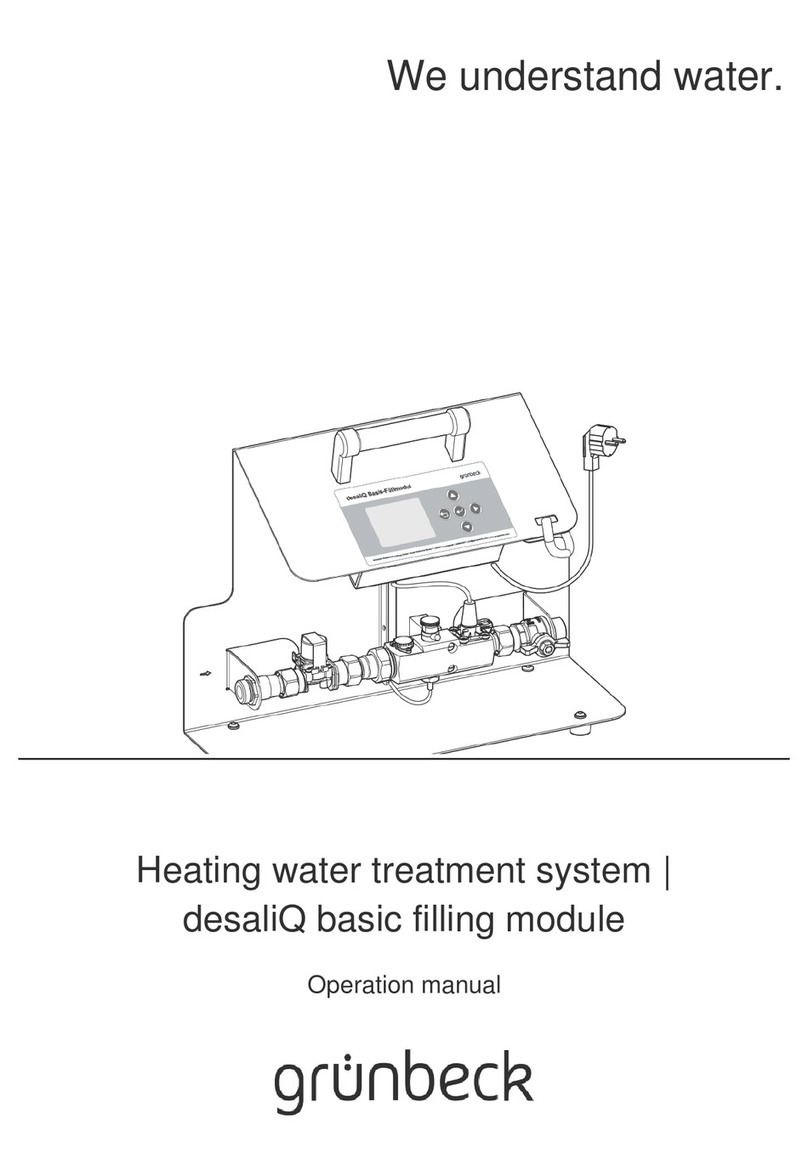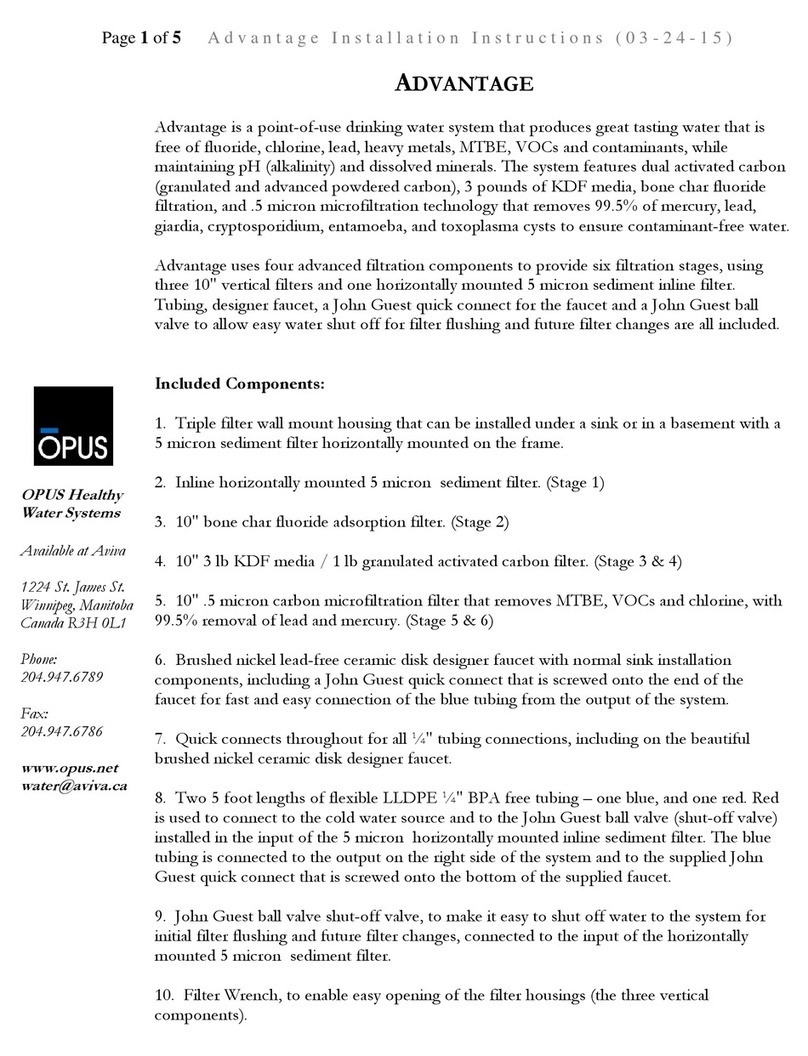
1
Description of the iron filtration system
The OXY3 iron filtration system includes an aeration tank, a filtration tank and a backwashing control
valve. Incoming water flows into the control valve and is directed into the aeration tank. Exposure to the air in
this tank will start oxidizing the iron. The water then flows through the back connector tube and into the filtration
tank where the oxidized iron is trapped by the media. The iron-free water then returns to the control valve
where it is directed into the service lines.
Periodically the control valve will go through a backwash cycle. This cycle will typically begin at 1:00
A.M. flushing the accumulated iron to the drain. Part of this backwashing process includes an air draw cycle
which will replenish the pocket of air in the aeration tank and prepare the unit for the next period of service.
Water Quality
While the OXY3 filter will perform under a variety of water qualities there are a few things that need to
be considered to ensure satisfactory performance. The water should be tested to determine the concentration,
or levels of the items listed below.
pH - A measurement of the acidity of the water. pH is reported on a scale from 0 to 14. Neutral water
has a pH of 7.0, lower values indicate acidic water. The OXY3 iron filter performs best when the pH is 7.0, or
higher. pH values below 7.0 require a special media blend in the filter in order to elevate the pH for proper iron
oxidation.
Iron - A naturally occurring metallic element. Iron concentrations in excess of 0.3 milligrams/liter (mg/l)
combine with oxygen causing orange or red (rust) stains on plumbing fixtures. Iron naturally exists in some
water sources in either clear water (ferrous) state, red water (ferric) state or bacterial form. The OXY3 iron filter
can reduce any of these forms of iron.
Manganese - A naturally occurring metallic element. Manganese concentrations as low as 0.05
milligrams/liter (mg/l) can combine with oxygen to cause dark brown or black staining on fixtures. Additionally,
manganese can cause an odor in the water similar to a “rotten egg” smell. The OXY3 iron filter reduces
manganese as well as iron, however, manganese oxidation requires the pH of the water to be elevated to 8.2 or
higher. Special OXY3 media blends are available to elevate the pH of manganese bearing waters.
Tannin - A naturally occurring humic acid. Tannin is an acid caused by water passing through decaying
vegetation. Coffee and Tea are prime examples of tannin in water. As hot water passes over the coffee beans,
or tea leaves, the tannin is extracted causing color and flavor in the water. Tannin concentrations as low as 0.3
milligrams per liter can cause a yellow discoloration in the water and may interfere with the OXY3 iron filter’s
long-term ability to remove the iron as the media becomes coated with the tannic acid.
Hydrogen Sulfide - A naturally occurring gas. Hydrogen sulfide, more commonly referred to as sulfur
gas, causes a distinct odor similar to “rotten eggs.” Due to its gaseous nature, hydrogen sulfide must be tested
at the well site within 1 minute of drawing the sample. If a water sample has been sitting for a while the sulfur
gas will dissipate and cause the hydrogen sulfide test to be lower than the actual concentration. If sulfur is
present, the filter should be set to backwash more frequently to prevent the gas from building up. The OXY3
iron filter can typically treat up to 2 to 3 milligrams per liter of sulfur gas.
Preinstallation Instructions
















